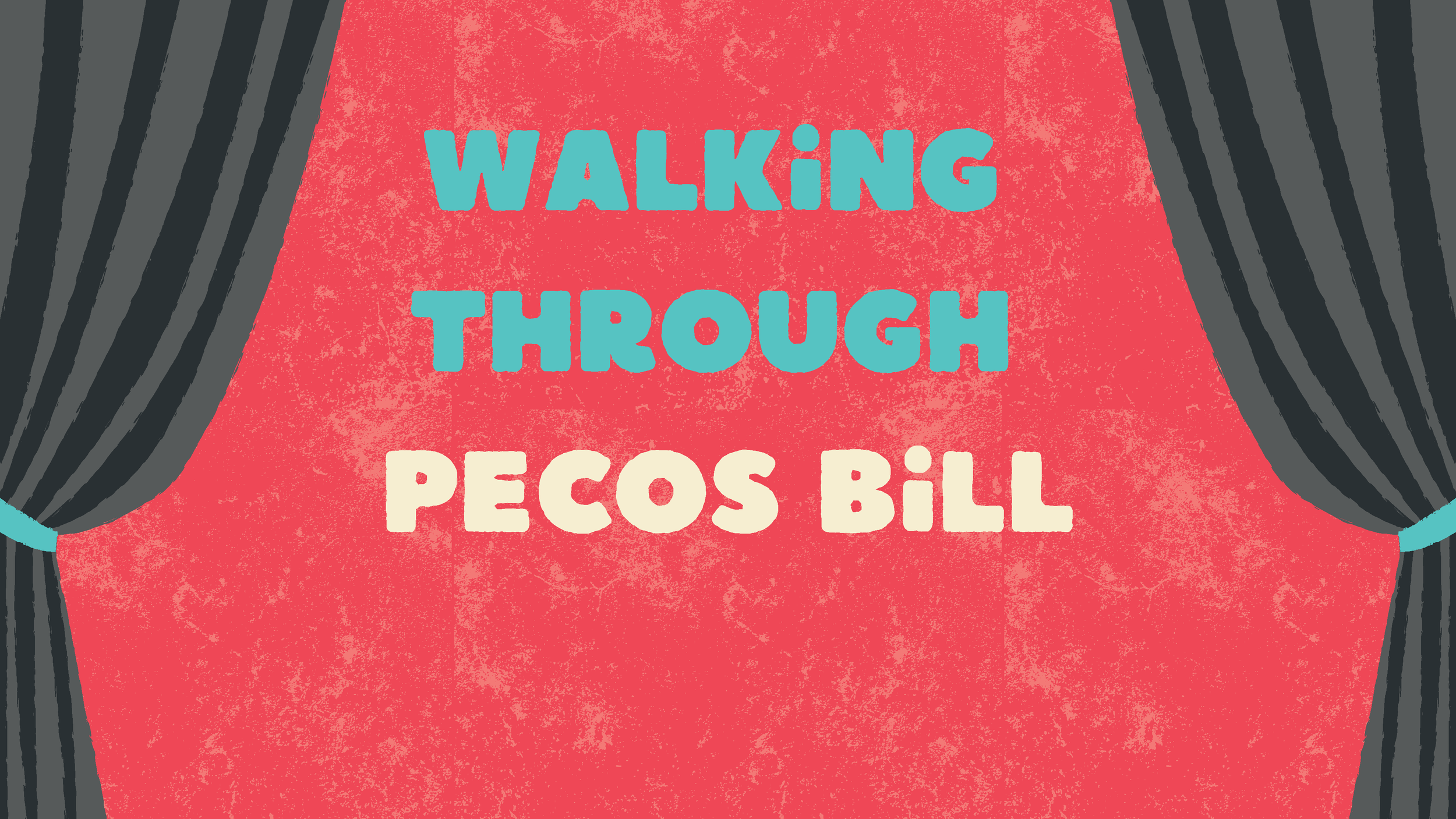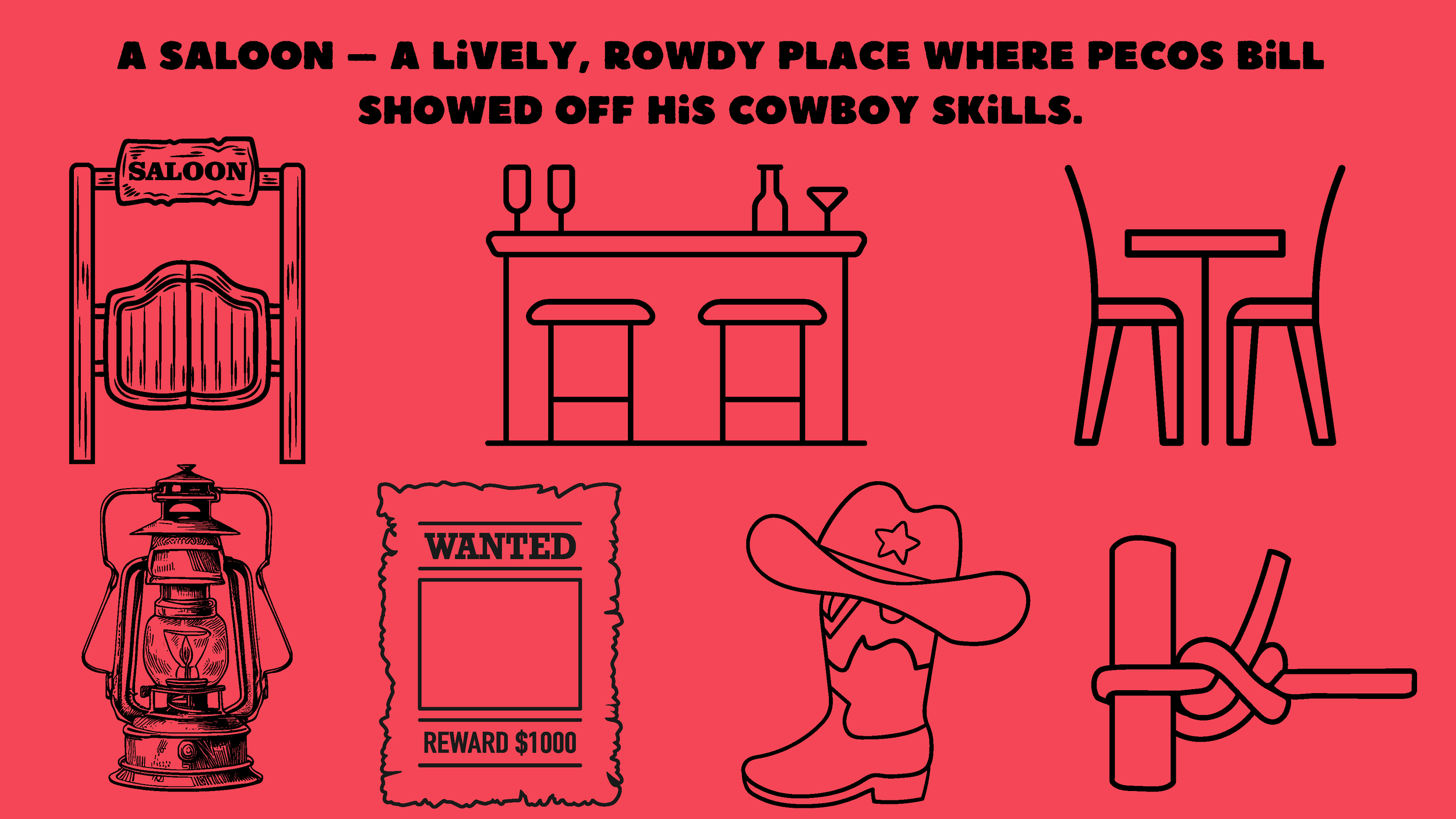Storytelling, Setting, and Theater Arts Integration
Story of Pecos Bill
2nd Grade • English Language Arts (ELA) & Theater
Lesson Overview: This a collaborative lesson plan second-grade lesson integrates theater arts techniques with language arts objectives to explore the concept of setting through the American tall tale "Pecos Bill." Students engage in a learning experience that combines physical movement, imagination, and storytelling to understand how setting influences character actions and story development.
Learning Objectives:
Students Will:
Showcase the sneak previews to an audience.
Reflect on the learning journey and the skills developed throughout the project.
Celebrate the achievements and progress made by all students.
Lesson Process: In this focused lesson, students deepen their grasp of essential storytelling elements by examining how setting, characters, and plot work together to craft engaging narratives. They apply this knowledge directly as they write and refine their sneak preview scripts, with special attention to creating captivating introductions. Through guided practice, students develop their narrative delivery skills, learning to use vocal techniques like tone, pacing, and projection to bring their stories to life. This integrated approach helps students become both skilled writers and confident storytellers.
Time Required:
80 minutes
Materials List:
Copies of script drafts
Open space for vocal exercises
Slides with visuals
Assessment :
Assessment includes measuring not only subject matter achievement and arts learning but also teamwork, collaboration, and engagement.
"Exit Ticket and observation of participation"
"Observation: observe students' participation and engagement in all activities noticing how they construct their understanding."
Lesson
Activities & Instructions
The Activities & Instructions section provides a structured sequence of learning experiences, guiding educators through engaging, interactive lessons.
Lesson Activities
-
Greet students and briefly review the previous lessons on setting and exaggeration in Tall Tales.
Introduce today's focus on "characters," particularly the exaggerated characters.
Emphasize that exaggerated characters are often larger than life and represent specific qualities or traits in an extreme way.
-
Lead students in a warm-up that focuses on using their voice and body Identify teachers’ and teaching artists’ roles in developing arts integrated teaching units. Incorporate activities that intentionally responds to differing learner’s perspectives. Apply skills appropriate to providing educational opportunities for all students.
Demonstrate knowledge of strategies and ways to expose students to a range of different teaching methods
Demonstrate the to exaggerate actions and emotions.
Voice: Begin with vocal exercises where students experiment with different pitches, volumes, and tones to exaggerate a character's voice.
Body: Guide students through movements that exaggerate physical traits.
Facial Expressions: Encourage students to practice making exaggerated facial expressions to convey extreme emotions like joy, anger, or surprise.
-
Facilitate a discussion on the characteristics of exaggerated characters in Tall Tales.
Ask students to think about what makes a character exaggerated. Is it their strength? Their size? Their bravery?
Provide examples from other Tall Tales and have students identify the exaggerated traits (e.g., Paul Bunyan’s immense size, Pecos Bill’s incredible skills).
Encourage students to think about why these characters are exaggerated. What message or moral might the story be trying to convey through these larger-than-life figures?
-
Classroom Teacher Activities:
Review specific vocabulary and Read "John Henry" to the class, emphasizing the descriptions of John Henry's exaggerated characteristics. Discussion: Characteristics of exaggerated characters.
Teaching Artist Activities:
Support the reading by encouraging application of the collaborative Process Recognize how the arts change the learning experience. students to visualize John Henry's exaggerated traits Theater Exercise: "Paint a Character" to create exaggerated characters.
-
Teaching Artist Activities:
Facilitate the discussion by prompting students with questions using the "who, what, where, when, why" framework. ○ Setting: Ask students to use their imagination and "show me" where and when the story takes place by using their body and space in the room.
Characters: Have students "show me" who the characters are by using body language (posture, gesture and facial expressions) to represent them.
Plot: Ask students to identify and show "what happens" in the story and explore "why" the characters behave the way they do, focusing on using their voice, body, and imagination.
Encourage students to express the story elements physically and vocally, using their actor's tools to bring the story to life.
-
Introduce the improv game "Paint a Character," focusing on creating a character with exaggerated traits.
Instructions for the Game:
Students will work together to create a detailed, exaggerated character, piece by piece.
One student at a time will step forward and describe an aspect of the character using gestures, pantomimes, and words.
Physical Appearance: The student describes the character's physical traits (e.g., body pose, height, clothes, accessories, objects they may be holding, age, hair) while demonstrating with their body.
Psychological Presence: Students add to the character by describing their psychological traits (e.g., smart, funny, grumpy, mood, any personality traits that can describe a person or an animal). ○ Continue until the character is “painted” with exaggerated traits.
Encourage students to be as creative and bold as possible, using their voice, body, and facial expressions to bring the exaggerated character to life.
After the character is fully painted, have a brief discussion about the choices made and how they contribute to the overall exaggerated nature of the character.
Students create John Henry’s exaggerated traits, using the "Paint a Character" exercise as inspiration.
-
Review the key points from the lesson, reinforcing the significance of exaggerated characters in storytelling.
Guide students to complete an exit ticket where they write or draw something they learned about settings and how it affects the story.
NATIONAL CORE ARTS STANDARDS
-
Anchor Standard 5
Develop and refine artistic work for presentation.Anchor Standard 6
Convey meaning through the presentation of artistic work.
Success Criteria
Students successfully present their sneak previews to an audience, demonstrating clarity, expression, and confidence.
Students engage in reflective discussions, articulating what they learned and how they grew during the project.
Students participate in the celebration of their and their peers' achievements, recognizing their efforts and progress.
Key Themes & Ideas:
Arts Integration: The core concept is integrating theater into language arts to enhance understanding of literary concepts (exaggeration, character development, and storytelling). Acting techniques and improvisation to understand and represent the setting of the story, enhancing their comprehension and creative expression.
Exaggeration in Tall Tales: The lesson's primary focus is understanding how exaggeration contributes to the storytelling in Tall Tales. Through this arts-integrated approach, students physically embody the exaggerated qualities of tall tale characters, stretching their bodies and creating booming voices like Pecos Bill's thunderous yell. Students then translate these larger-than-life physical experiences into their own written tall tales, using their embodied understanding of exaggeration to create descriptive language that brings their stories to life.
Connections and Team Building: Students transform ordinary tales into extraordinary adventures by matching powerful descriptive words with grand theatrical gestures, creating memorable connections between movement and meaning that make vocabulary leap off the page and onto the stage.
Accessibility: The teacher/teaching artist create a supportive learning environment for students to engage in theater activities and collaborate with each other. Intentional accommodations and universal design elements are applied to ensure every student has multiple pathways to understand, engage with, and demonstrate their mastery of the content. This structure maintains high academic standards while providing the necessary supports for all learners to succeed.
Collaborative Teaching: This lesson highlights the collaborative roles of the content teacher and the teaching artist. The CONTENT TEACHER: guides students to identifying key elements of a tall tale and building vocabulary skills. TEACHING ARTIST: integrates theater activities for the students to engage and collaborate with each other.
– REACH –
Thank you to our Educators, Artists, and Collaborators.
School: Rowlett Elementary
Teacher: Theresa Kauffman
Teaching Artist: Maria Schaedler-Luera
Arts Organization: Atomica Arts
-
Resource 1: link




